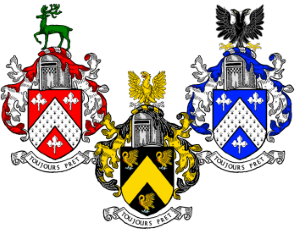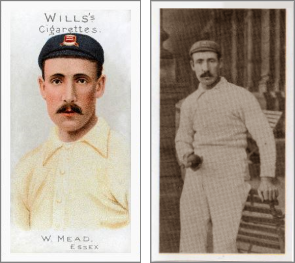Coats of Arms
The three main coats of arms associated with Mead families are from left to right:
Arms: gules a chevron ermine between three trefoils slipped argent.
Crest: a reindeer trippant vert.
Arms: sable a chevron between three pelicans or vulned gules.
Crest: an eagle displayed or.
Arms: azure a chevron ermine between three trefoils slipped argent.
Crest: a double-headed eagle displayed sable, armed or.
MEAD FAMILY HISTORY
Welcome to Mead-Family.Net a one name study and home for research into the Mead, Meade, Meads and Mede family names including other variants. This website contains many lines of descent covering the entire globe along with photographs, documents and scanned images. This website is a collaboration by many researchers into our collective genealogy and is registered with the Guild of One-Name Studies and the Surname Society. By joining Mead-Family.Net you can help to expand the knowledge of our family and contribute to its genealogical study.
The surname Mead and its variants Meade and Mede first appear in the mid 13th century when John ate Mede is mentioned in the Essex fine court rolls. It is possible that the name existed before then, but very few records survive from that time.Surnames did not become hereditary for all levels of society until the early 14th century. Before then Mede was just a descriptive name indicating someone who lived by a meadow or mead. At the same time in the early records there were people called de prato (Norman French) or ad Pratum (Latin), the equivalent of atte Mede. These descriptive names are similar in usage to faber (the Latin for a smith) or filio Ricardi (Richard's son). Faber, Smith and Richardson, like Mead and Meade have survived to the present day. The name was becoming established in Somerset and the counties around London, especially Essex, Hertfordshire and Buckinghamshire. This pattern remained little changed until the late 19th century. Some families can be traced for several generations to the 14th and 15th centuries, but are not necessarily related to each other.
The name has also been adopted as an anglicised form of some foreign surnames. The surname Mead has therefore originated independently in different locations producing several unrelated families with the same or similar surnames.
Walter Mead
Walter Mead (1868–1954) was the principal bowler for Essex during their first two decades as a first-class county. As a member of the Lord’s ground staff, he was also after J.T. Hearne the most important bowler for MCC and Ground, who in those days played quite a number of first-class matches. A right arm bowler of slow to medium pace, Walter Mead always maintained an excellent length and could spin back to deadly effect whenever wickets were affected by rain.
Read more about him on Cricinfo by clicking the picture above.





